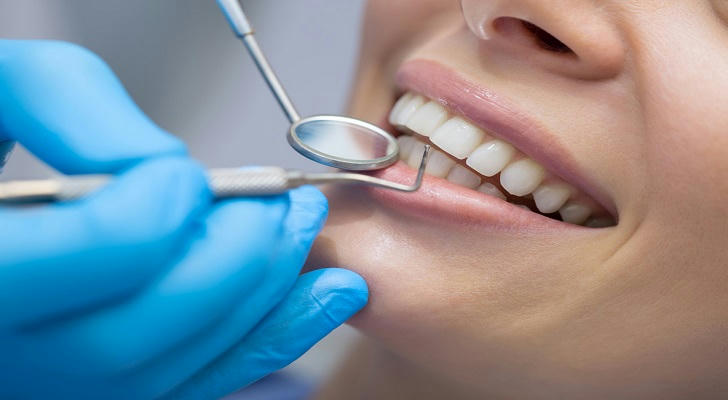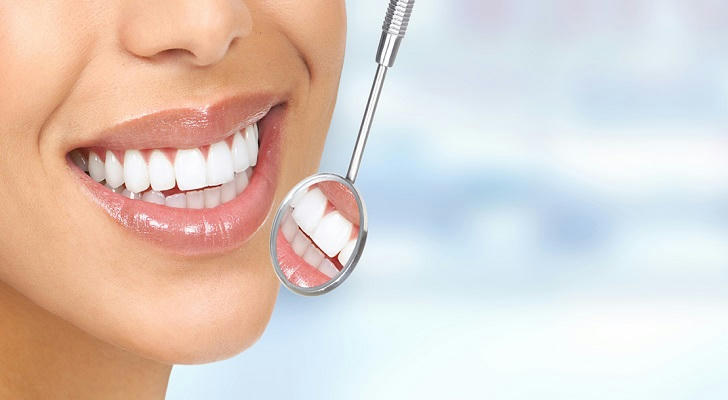5 Common Dental Problems and How to Prevent Them

Proper dental care is essential for maintaining overall health and well-being. It plays a crucial role in preventing common dental problems such as tooth decay, gum disease, and bad breath.
Regular dental check-ups and cleanings help detect and treat issues early on, preventing more serious complications. Good oral hygiene habits, such as brushing and flossing daily, can also improve confidence and self-esteem by ensuring a bright and healthy smile. Ultimately, dental care is not just about maintaining a beautiful smile, but also about promoting good health and preventing potential health risks.

Tooth Decay
Description: Tooth decay, also known as cavities, is one of the most common dental problems. It is caused by the buildup of plaque on the teeth, which can lead to the erosion of tooth enamel and the formation of cavities.
Statistics: According to the American Dental Association, tooth decay is the second most common disease in the United States, affecting over 90% of adults aged 20 and older. The Centers for Disease Control and Prevention reports that nearly one in four children under the age of five already have cavities. The National Institute of Dental and Craniofacial Research notes that untreated tooth decay can lead to pain, infection, and tooth loss.
Prevention: To prevent tooth decay, brush your teeth twice daily with fluoride toothpaste, floss daily, and limit sugary and acidic foods. Regular dental check-ups are also crucial to catch early signs of decay.
User Case: Emily, a 35-year-old teacher, noticed increased sensitivity in her teeth. After a dental check-up, she learned she had several cavities. By adopting better oral hygiene practices and reducing her intake of sugary snacks, she was able to manage her condition and prevent further decay.
Gum Disease
Description: Gum disease, also known as periodontal disease, is an infection of the gums that can lead to inflammation, bleeding, and eventually tooth loss if left untreated. It is often caused by poor oral hygiene habits and the buildup of plaque and tartar on the teeth.
Statistics: According to the American Academy of Periodontology, gum disease is a prevalent oral health issue affecting approximately 47% of adults over the age of 30 in the United States. The Centers for Disease Control and Prevention reports that nearly 64.7 million American adults have mild, moderate, or severe periodontitis. The World Health Organization highlights that untreated gum disease can lead to tooth loss, systemic health issues, and impact overall quality of life.
Prevention: To prevent gum disease, practice good oral hygiene by brushing and flossing daily, and use an antimicrobial mouthwash if recommended. Regular dental cleanings can help remove plaque and tartar buildup.
User Case: John, a 50-year-old engineer, experienced persistent gum bleeding and bad breath. A dental visit revealed early signs of gum disease. By improving his brushing technique and scheduling more frequent cleanings, he managed to reverse the condition and maintain healthier gums.

Tooth Sensitivity
Description: Tooth sensitivity is a common dental problem that causes pain or discomfort when consuming hot, cold, sweet, or acidic foods and drinks. It can be caused by exposed tooth roots, enamel erosion, or tooth decay.
Statistics: According to a study published in the Journal of Clinical Periodontology, tooth sensitivity affects approximately one in eight adults globally. The American Dental Association notes that tooth sensitivity is a common dental problem, with around 45 million Americans experiencing some level of sensitivity. The National Institute of Dental and Craniofacial Research reports that tooth sensitivity is often caused by exposed dentin, enamel erosion, or gum recession.
Prevention: Use toothpaste specifically designed for sensitive teeth, avoid overly hot or cold foods, and practice good oral hygiene to prevent enamel erosion and gum recession.
User Case: Sarah, a 28-year-old graphic designer, experienced sharp pain when drinking cold beverages. She switched to a desensitizing toothpaste and reduced her intake of acidic drinks, which helped alleviate her symptoms.
Bad Breath
Description: Bad breath, also known as halitosis, is a common dental problem that can be embarrassing and socially isolating. It is often caused by poor oral hygiene, gum disease, dry mouth, or certain medical conditions.
Statistics: According to the American Dental Association, bad breath, or halitosis, affects an estimated 50% of adults in the United States. The Mayo Clinic states that common causes of bad breath include poor oral hygiene, gum disease, dry mouth, and certain foods. The Centers for Disease Control and Prevention highlights that bad breath can also be a sign of underlying medical conditions such as respiratory infections or gastrointestinal issues.
Prevention: Maintain good oral hygiene by brushing and flossing regularly, and stay hydrated to avoid dry mouth. Chewing sugar-free gum and visiting your dentist can also help manage bad breath.
User Case: Mark, a 42-year-old accountant, found himself avoiding social situations due to bad breath. After improving his oral hygiene routine and using mouthwash, his condition improved significantly. A visit to the dentist also helped identify a minor gum issue that contributed to his bad breath.
Oral Cancer
Description: Oral cancer is a serious and potentially life-threatening dental problem that can affect the lips, mouth, throat, or tongue. It is important to visit a dentist regularly for oral cancer screenings to detect any signs of the disease early on.
Statistics: The American Cancer Society estimates that around 54,000 new cases of oral cancer will be diagnosed in the United States in 2021. Additionally, the National Institute of Dental and Craniofacial Research notes that men are twice as likely as women to develop oral cancer. The Oral Cancer Foundation reports that alcohol and tobacco use are major risk factors for oral cancer, attributing approximately 75% of cases to these habits.
Prevention: Avoid tobacco products and limit alcohol consumption. Regular dental check-ups can help with early detection, and practicing good oral hygiene supports overall oral health.
User Case: Laura, a 60-year-old retiree, noticed a persistent sore in her mouth. Her dentist conducted an oral cancer screening, which led to early detection and successful treatment of the cancer. This experience highlighted the importance of routine dental visits and screenings.
These are just a few examples of common dental problems that many people may experience at some point in their lives. To prevent these issues, it is essential to practice good oral hygiene by brushing and flossing daily. Regular dental check-ups can help detect any issues early on. Avoiding tobacco products and maintaining a healthy diet low in sugars and acids can also prevent these oral health problems. Additionally, being aware of any changes in your oral health and seeking prompt medical attention for any concerns can help in preventing and addressing these conditions effectively.
